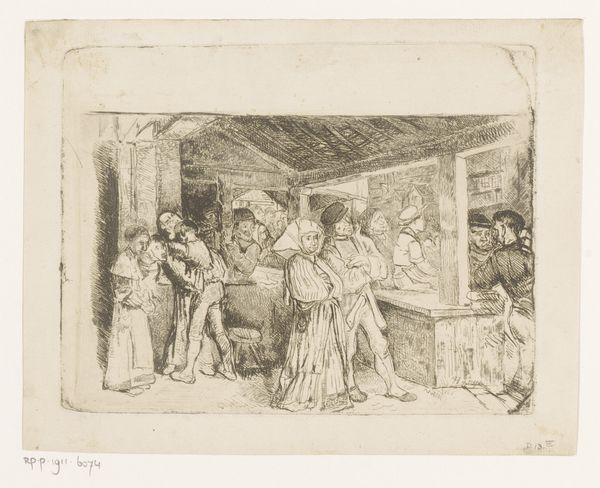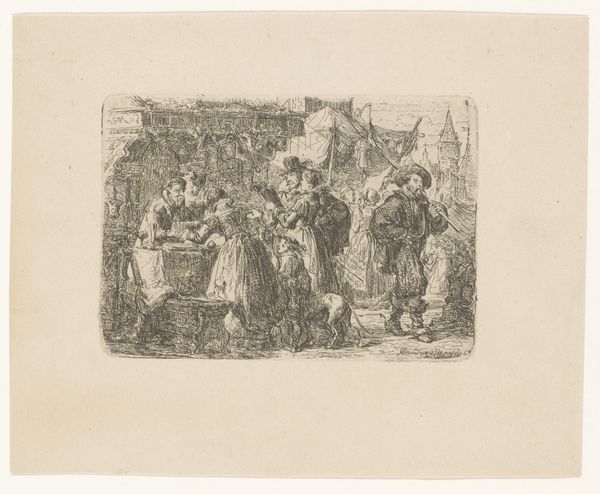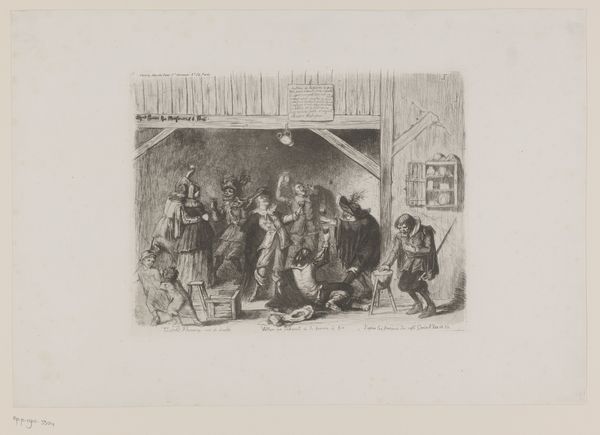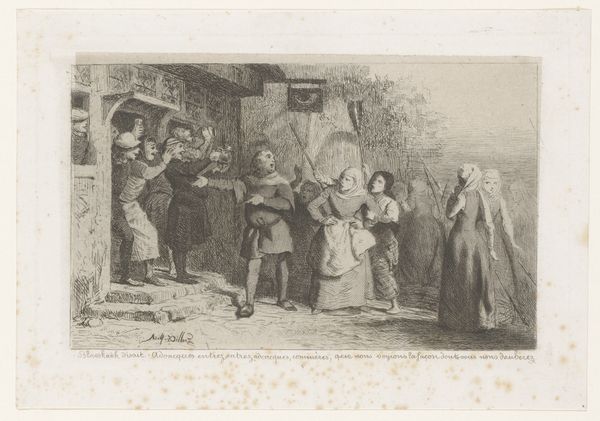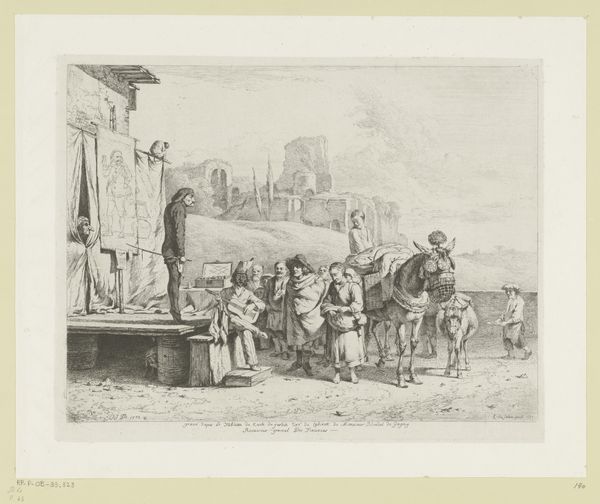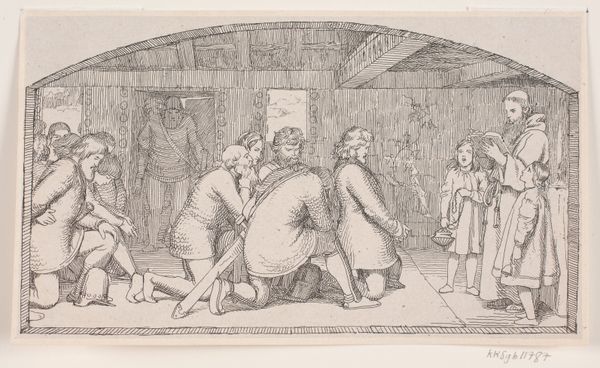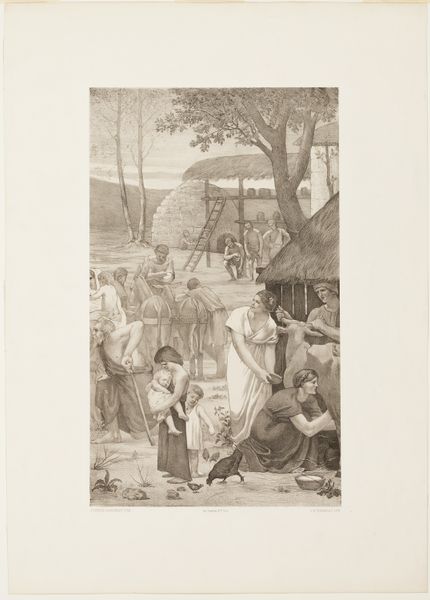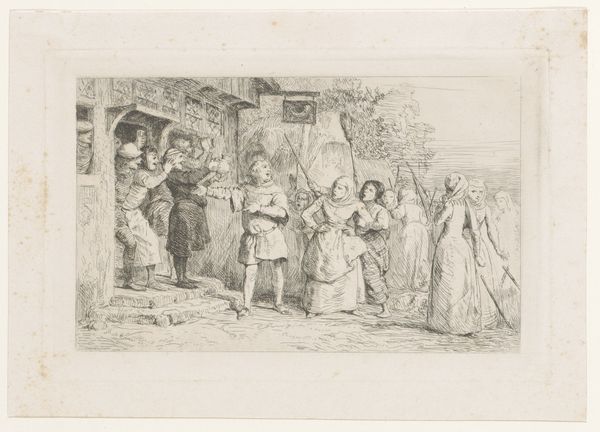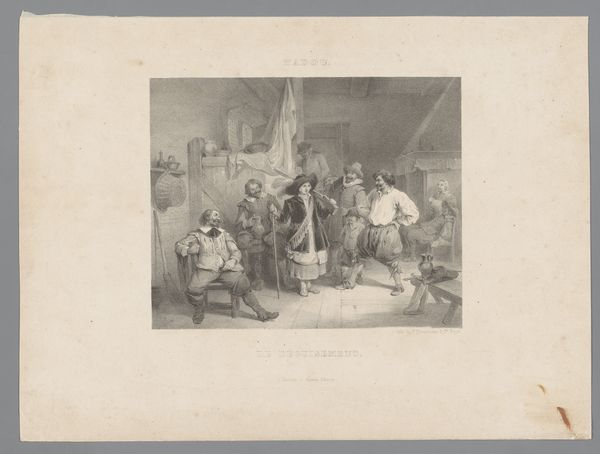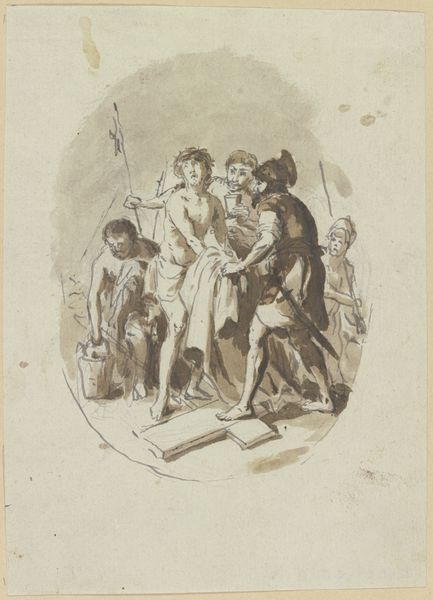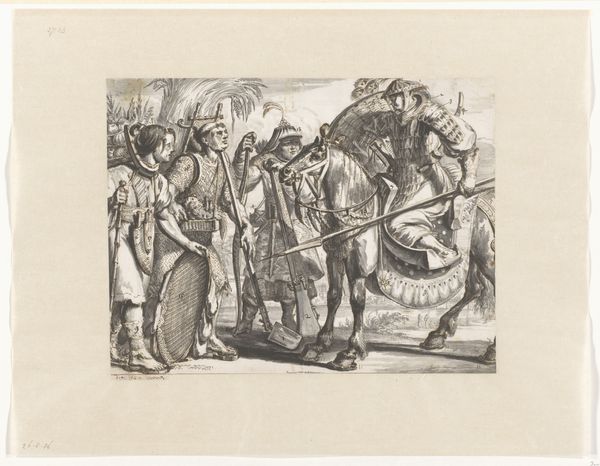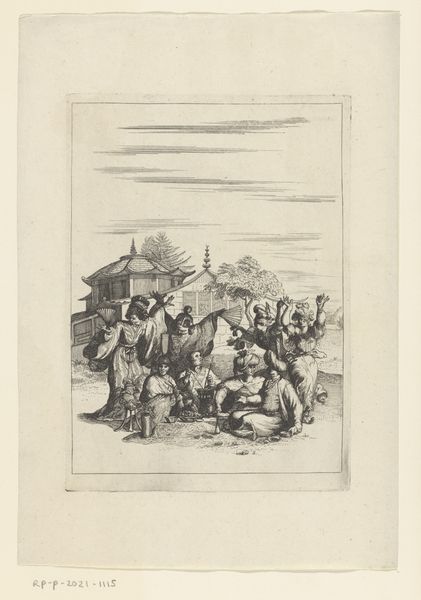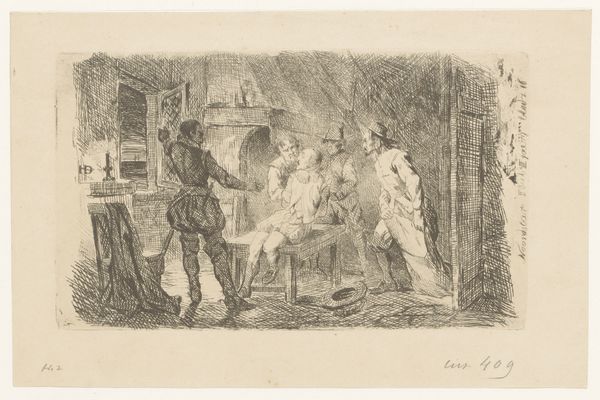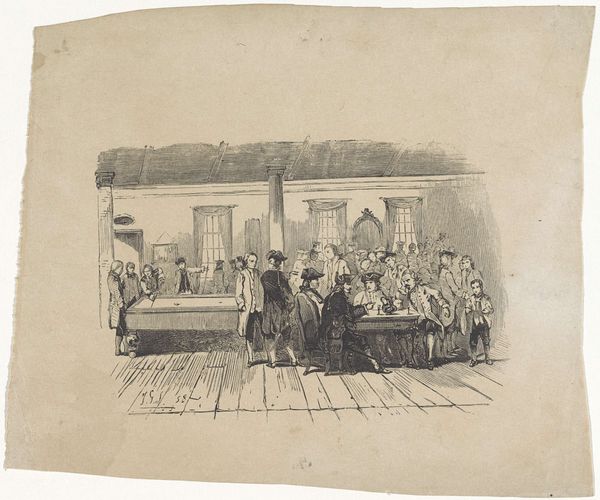
drawing, print, ink, woodcut
#
drawing
#
narrative-art
# print
#
ink
#
woodcut
#
genre-painting
Dimensions: 146 mm (height) x 162 mm (width) (bladmaal)
Curator: This is a print from 1885 titled "Uglspil og slagteren," created with ink and woodcut. The scene is alive with figures—butchers, performers, onlookers—all rendered with such immediacy in ink. What do you make of this bustling snapshot? Editor: Well, the term "genre painting" comes to mind; a snippet of daily life captured in ink. But the butcher shop isn't necessarily something I would call "art," at least in the conventional sense of beauty. Is this print elevating labor in some way? Curator: Exactly. Notice how the labor of the butchers – transporting the meat – is set against the performance, the "Uglspil." The materials here—the ink, the wood—allowed for mass production. Consider the context: What do you think the intent of this woodcut may be in making everyday commerce a thing of art? Editor: I suppose it makes art accessible; less an object for the wealthy, and more for the masses. And is the content not just as important as the intent here, in displaying everyday people and activities in their environment? Curator: Precisely! And we can then delve deeper, noting the contrast of those bringing in their "goods" (the dead animal meat) vs. the playful element. And consider too how the print-making medium might reach diverse social strata—a common visual language that depicts scenes familiar to various audiences. So how might this image complicate those high/low art distinctions? Editor: So by using materials typically used to disseminate information quickly and widely, like ink and woodcut, to depict daily scenes, it breaks down the concept that art should only be grand subjects rendered in fancy, unique materials. It democratizes art, right? Curator: Absolutely. And thinking materially allows us to see how "Uglspil og slagteren" speaks to its time, engaging with social structures of art production. This genre challenges established hierarchies, revealing a new way for artists to respond to the mundane experiences of labor and transaction in society. Editor: It makes me rethink the materials. The message isn’t only *in* the image, it’s in the very means of making the image, too. Thanks for opening my eyes to a completely new reading of this work!
Comments
No comments
Be the first to comment and join the conversation on the ultimate creative platform.
